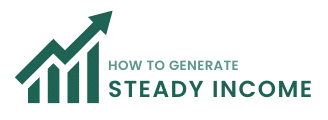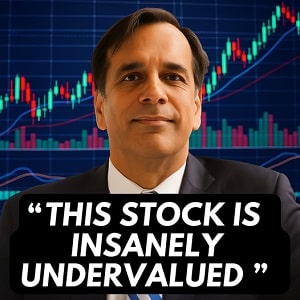U.S.-Iran ceasefire eases oil fears. Learn how TIPS and muni bonds keep your income steady in 2025.
From Shockwaves to Stability
“Oil’s calming down—want bonds that pay no matter what?” That’s the question circling trading desks and kitchen tables alike after the June 23rd ceasefire between the U.S. and Iran. The ink hadn’t dried before Brent crude dropped 6%, sending a ripple of relief through global markets.
With war clouds thinning and a commodity crisis averted (for now), the spotlight turned toward income-generating assets. The bond market—often an afterthought during bull runs—is now the center of attention. Investors are asking: where can we find yield without adding risk?
Enter bonds—specifically Treasury Inflation-Protected Securities (TIPS) and municipal bonds. With TIPS yielding 2.1% real and munis offering 2.8% tax-free, these vehicles are offering what volatile equities cannot: steady, predictable cash flow.
In this article, we’ll explore how the geopolitical shift triggered by the ceasefire is creating new opportunities in the bond market, why TIPS and munis deserve a place in your portfolio, and how to build a resilient income strategy for 2025.
Ceasefire Fallout: What Happens When Oil Cools Down
On June 23, Brent crude fell 6–7%, settling around $71.48. The news rippled across markets instantly. The S&P 500 ticked higher, the U.S. dollar dipped, and Treasury yields softened. With inflation pressure easing and the threat of energy disruption off the table (at least temporarily), investors moved out of commodities and into bonds.
The geopolitical détente created a psychological relief rally. Traders began pricing in a lower probability of rate hikes, and by extension, a friendlier environment for fixed income.
Why this matters:
- Oil calm = lower inflation expectations. When crude prices fall, transportation, manufacturing, and utility costs often follow. This gives central banks breathing room and supports bond prices.
- Dovish sentiment = lower interest rate forecasts. Lower rates increase bond prices and attract yield-seeking capital.
- More appetite for bonds. With equities near record highs, many investors are looking to de-risk. Bonds offer that balance without sacrificing income.
Historical context reinforces this behavior: following similar events like the 2024 Lebanon ceasefire or the 2019 Saudi oil facility attacks, fixed income instruments—especially intermediate and inflation-linked bonds—showed strong relative performance. It’s a well-worn pattern: de-escalation boosts bond demand.
Income Heroes: TIPS & Municipal Bonds
Bonds aren’t glamorous. They won’t give you 10x returns in a month or dominate financial headlines. But when it comes to generating reliable, tax-efficient income, they’re unmatched.
TIPS: Inflation Protection in Your Pocket
TIPS are U.S. government bonds indexed to inflation. Unlike regular Treasuries, the principal on a TIPS bond adjusts with the Consumer Price Index (CPI), meaning your investment stays ahead of rising prices.
- Current real yield: ~2.1%
- ETF examples: TIP (iShares), SCHP (Schwab)
- Best suited for: Investors seeking real (inflation-adjusted) returns, long-term savers, IRAs
A TIPS ETF works by holding a basket of inflation-protected bonds with various maturities. As inflation rises, the interest payments and principal value increase. For investors worried about the long-tail risk of inflation spikes (driven by energy shocks or fiscal expansion), TIPS are essential.
Municipal Bonds: The Tax-Free Workhorse
Municipal bonds—or “munis”—are debt securities issued by local governments, states, and municipalities. They fund infrastructure projects like schools, roads, and water systems. What makes munis attractive is their tax treatment.
- Average tax-free yield: ~2.8%
- Tax-equivalent yield (high bracket): 4.3–4.5%
- ETF examples: VTEB (Vanguard), MUB (iShares), TFI (SPDR)
For high-income earners, muni bonds can significantly increase after-tax income. For example, if you’re in the 37% tax bracket, a 2.8% tax-free muni yield is equivalent to a taxable yield of over 4.4%.
And unlike corporate debt, muni defaults are rare—especially for general obligation and revenue-backed issues from strong municipalities.
Build Your 2025 Bond Strategy
Here’s how to apply this income insight to your portfolio. The goal is to combine inflation protection with tax efficiency and yield predictability.
1. Allocate 10% to TIPS via ETF
If you’re building for the long term, TIPS serve as inflation insurance. Using an ETF like TIP or SCHP ensures you get exposure across maturities. As of mid-2025, TIPS are yielding over 2% real—a rare and valuable opportunity.
- Use case: Retirement accounts, inflation hedging buckets
- Rebalancing tip: Reassess allocation annually based on CPI trends
2. Invest in VTEB or MUB for Tax-Free Yield
These ETFs give you exposure to hundreds of investment-grade muni bonds. Vanguard’s VTEB, with its ultra-low expense ratio (0.05%), offers exposure to a broad muni index and monthly income distributions.
- Use case: Taxable brokerage accounts, high-income households
- Rebalancing tip: Monitor changes in state-level tax incentives
3. Ladder Bonds to Control Liquidity and Rate Risk
Bond ladders stagger maturity dates across a set timeline (e.g., 1–5 years), allowing for regular reinvestment. This spreads out interest rate risk and improves cash flow.
- Short-term rungs: VTIP (short-term TIPS), SHM (short munis)
- Long-term rungs: MUB (intermediate), MLN (long-term munis)
4. Blend with Traditional Treasuries
Standard Treasuries still serve a purpose. A barbell approach—with long-duration Treasuries (e.g., TLT) and short-term (e.g., SHV)—provides protection during rate swings.
- Ideal for: Risk-averse investors, capital preservation goals
Sample Allocation Model
| Asset Class | Allocation | Yield | Purpose |
|---|---|---|---|
| TIPS ETF | 10% | 2.1% real | Inflation protection |
| Muni Bond ETF | 20% | 2.8% tax-free | Tax-efficient income |
| Short-Term Bonds | 10% | 2.5% | Liquidity layer |
| Traditional Treasuries | 10% | 4.1% | Risk hedge |
| Equities | 50% | Variable | Growth engine |
Yield Trends and Performance Data
TIPS Performance Snapshot
- From 2023–2025, TIPS delivered positive real returns every quarter.
- With real yields averaging above 2%, income has consistently outpaced inflation.
Muni Bond Strength
- Bloomberg data shows a 0.2% increase in muni yields post-ceasefire.
- Historical 10-year tax-equivalent yields on investment-grade munis exceed 4%.
- Default rate for AAA-rated munis: <0.05% over 10 years
Market Outlook
- Treasury futures are pricing in a 45–60% chance of rate cuts by Q4 2025.
- If cuts occur, bond prices—especially long-duration issues—will rise.
- This makes now a favorable moment to lock in yields before another round of monetary easing.
Behavioral Advantage: The Psychological Case for Bonds
Investing isn’t just math—it’s behavior. Bonds add ballast to portfolios, reducing volatility and emotional whiplash. When equities tank, bonds stabilize. When inflation surprises, TIPS cushion the blow. When taxes bite, munis soften the sting.
For retirees and income-focused investors, bonds reduce the need to sell assets in downturns. They provide monthly or quarterly cash that supports living expenses and keeps your plan on track.
Final Take: Resilience Over Reactions
2025’s investment climate demands discipline, not drama. Bonds won’t make headlines—but they will make payments. TIPS and munis give investors the rare combination of safety, income, and strategy.
Instead of chasing the next speculative pop, build a core of fixed-income assets that deliver. Inflation may recede, but taxes persist. Equities may climb, but they will drop. Bonds, however, pay.
Your Next Moves
- Allocate 10% to TIP or SCHP
- Use VTEB or MUB to lock in tax-free income
- Ladder your maturities across 1–5 years
- Blend with traditional Treasuries for stability
- Review your bond portfolio quarterly and reinvest interest
Ceasefire or not—your income should never be held hostage. Build your bond buffer now.


































